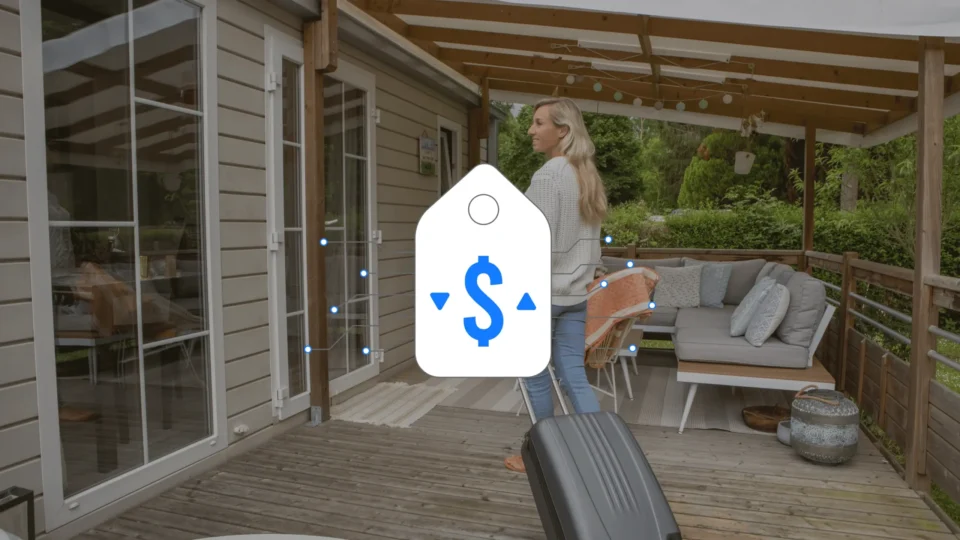Pricing is one of the most crucial factors determining the success of your short-term rental property. Set your rates too high, and you might scare away potential guests. Set them too low, and you could be leaving money on the table. The solution to this pricing conundrum lies in dynamic pricing for short term rentals.
Dynamic pricing is a strategy that allows you to adjust your rental rates based on fluctuating market demand, seasonality, local events, and other real-time factors. For short-term rental owners, dynamic pricing offers a smart, data-driven way to optimize earnings while maintaining competitiveness in a crowded market. This article will walk you through how to implement dynamic pricing for your short-term rental, the benefits of this pricing strategy, and how Book More Nights utilizes proprietary AI software to make pricing decisions even easier.
By understanding and applying dynamic pricing strategies, you can maximize your rental income, attract more guests, and stay ahead of your competition.
1. What is Dynamic Pricing for Short Term Rentals?
Dynamic pricing for short term rentals refers to the practice of adjusting rental prices in real-time based on various factors such as demand, competition, market conditions, and local events. This strategy enables rental owners to optimize their rates throughout the year, ensuring that they can maximize their income without compromising occupancy.
At its core, dynamic pricing allows rental owners to take advantage of peak demand periods by increasing rates during times of high demand and reducing rates when demand is low. By constantly adjusting your pricing based on real-time data, you can ensure that your property is always priced competitively, regardless of the time of year.
Dynamic pricing is powered by a variety of data points, including booking trends, market supply and demand, competitor pricing, and local events. Many property owners rely on automated pricing tools, such as those provided by platforms like Airbnb, to help implement dynamic pricing strategies efficiently.
2. Understanding the Factors That Influence Dynamic Pricing
Several factors influence dynamic pricing for short term rentals, making it essential to monitor the right data. Below are the key factors to consider when setting your rental price:
Local Events and Holidays
Local events such as festivals, concerts, or conferences often cause spikes in demand for short-term rentals. As these events draw in more visitors, rental prices should be adjusted to reflect the increased demand. Dynamic pricing helps ensure you’re maximizing earnings during these peak periods.
Holidays are another critical factor that influences pricing. During peak holiday seasons, people tend to travel more, and this leads to higher demand for rental properties. Dynamic pricing for short term rentals ensures that your rates are competitive during these high-demand periods, which can significantly boost your income.
Seasonality
Another key aspect of dynamic pricing for short term rentals is seasonality. For example, a coastal property might see higher demand in the summer months, while ski chalets might be in high demand during the winter season. Dynamic pricing allows you to adjust your rates to match the changing seasons, helping you stay competitive throughout the year.
Market Conditions
The overall market conditions also play a significant role in dynamic pricing. If there’s a surplus of available rental properties in your area, the competition may drive prices down. On the other hand, if your area is experiencing a shortage of available rentals, you can increase your rates to reflect the higher demand. Dynamic pricing allows you to adjust your prices in response to these shifting market conditions, helping you remain competitive in both good and bad times.
3. How to Set Dynamic Pricing for Short Term Rentals
Now that we understand the factors that influence dynamic pricing for short term rentals, let’s explore how to implement this strategy for your property. Here’s a step-by-step guide:
1. Research Local Demand
Start by researching the demand in your local area. Look at seasonal trends, popular events, and even historical pricing data to determine when demand is likely to spike or dip. This information will be essential when setting your dynamic pricing strategy.
2. Use Pricing Tools
Pricing tools, like Airbnb’s Smart Pricing or third-party platforms, can help you automate the process of adjusting rates. These tools analyze various factors in real-time, such as competitor pricing, market demand, and booking trends, to suggest optimal pricing for your property.
At Book More Nights, we take it a step further by utilizing our proprietary AI software, which helps to ensure that our clients’ rental prices are always aligned with market conditions, local events, and demand trends. This advanced technology provides real-time pricing adjustments, taking the guesswork out of pricing and ensuring maximum earnings.
3. Set Seasonal Rates
Based on the data you’ve gathered, set seasonal rates for your property. During peak seasons (like summer or the holiday period), adjust your prices upward to reflect higher demand. During off-peak seasons, adjust your rates down to remain competitive.
4. Monitor Your Pricing Regularly
Dynamic pricing requires ongoing monitoring and adjustments. Ensure you check your rates regularly and adjust them as needed. Platforms like Airbnb provide analytics that can show you how your pricing compares to others in your area.
4. Tools and Technology for Dynamic Pricing
There are several pricing tools available to property owners looking to implement dynamic pricing. These tools can help automate the process, saving you time and effort while ensuring that your pricing is optimized at all times.
Popular pricing tools include Airbnb’s Smart Pricing, Beyond Pricing, and PriceLabs. These platforms integrate with your rental listing and use real-time data to adjust your pricing based on demand, availability, and market conditions.
At Book More Nights, we use our proprietary AI software to handle dynamic pricing for our clients. This advanced software uses machine learning and big data analysis to continuously optimize rental prices based on multiple factors, including market conditions, local events, and seasonality. By using our AI-driven pricing solution, property owners can enjoy a hands-off approach to pricing while maximizing their rental income.
5. Holiday and Event-Driven Pricing Strategies
Special occasions like holidays and local events present lucrative opportunities for short-term rental owners. By implementing holiday rental pricing strategies, you can take advantage of high-demand periods and significantly increase your earnings.
During holidays, travelers are more likely to book short-term rentals, and the demand often exceeds the supply. As such, it’s essential to increase your rates during these times to capitalize on the influx of guests. For example, raising your rates during Christmas, New Year’s, or other major holidays can significantly boost your rental income.
Local events such as concerts, festivals, or conventions can also drive up demand. Dynamic pricing for short term rentals allows you to adjust your prices accordingly to ensure that you are getting the most out of these events. In areas where events are frequent, you should monitor the local calendar and adjust your pricing ahead of time to account for increased demand.
6. Common Mistakes to Avoid with Dynamic Pricing
While dynamic pricing is an excellent tool for maximizing your rental income, there are some common mistakes that property owners should avoid:
Underpricing or Overpricing
One of the most significant risks with dynamic pricing is underpricing or overpricing your rental. If you price too low, you may not be maximizing your potential earnings. On the other hand, if you price too high, you risk turning away potential guests. It’s essential to strike the right balance, and pricing tools can help you achieve this.
Failing to Monitor and Adjust Regularly
Dynamic pricing requires continuous monitoring. Failing to adjust your pricing in real-time can lead to missed opportunities or overpricing during low-demand periods. Always stay on top of market trends and competitor pricing to ensure that your rates are aligned with the current demand.
At Book More Nights, we use our AI software to ensure that our clients’ prices are adjusted automatically and regularly based on the most up-to-date data, eliminating the need for constant manual adjustments.
Conclusion
Dynamic pricing for short term rentals is an essential strategy for property owners who want to maximize their rental income. By adjusting your rates in response to real-time market conditions, local events, and seasonal demand, you can stay competitive and ensure that you’re always pricing your property at its optimal rate.
At Book More Nights, we take dynamic pricing to the next level by utilizing proprietary AI software to provide real-time pricing adjustments for all our clients. This cutting-edge technology allows us to take the guesswork out of pricing, ensuring maximum earnings with minimal effort.
Take Action!
Ready to take your dynamic demand-driven pricing to the next level? Contact Book More Nights today and discover how our AI-powered pricing solution can help you maximize your rental income. Let us handle the pricing while you enjoy the benefits of increased bookings and higher profits.


